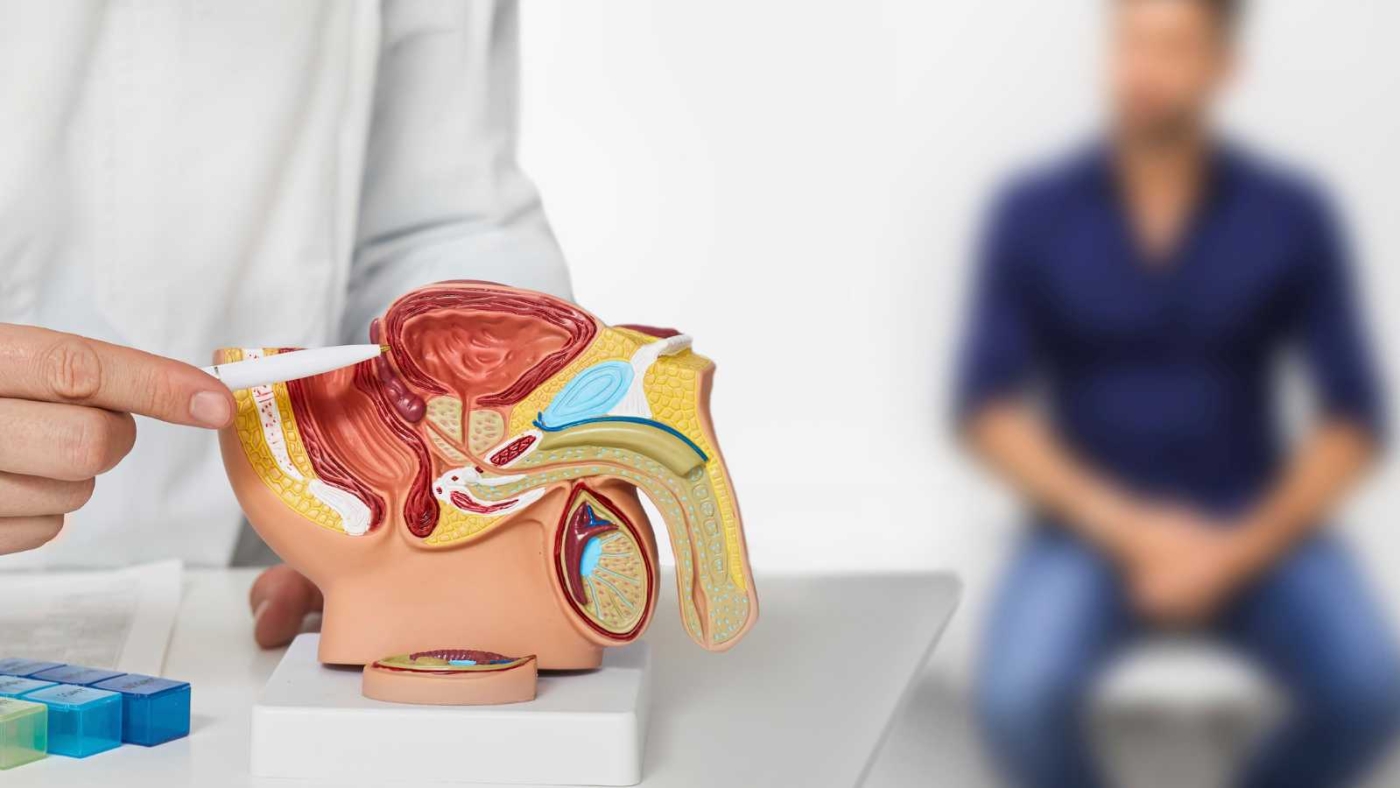Enlarged prostate, watch out for 6 warning signs that men shouldn’t ignore. As we age, our bodies change over time. Hormones gradually decrease from being strong, causing our moods, bodies, and minds to change from before. One of the diseases that men aged 45-60 years and over must be careful of is enlarged prostate because most Thai men suffer from this disease, almost 80%, followed by prostate cancer at 18%. Therefore, we must observe our body’s symptoms. If we find any abnormalities, we must see a doctor immediately. Therefore, we have brought 6 warning signs of enlarged prostate to tell you.
What is prostate disease?
Benign Prostatic Hyperplasia (BPH) is a condition in which the prostate gland is abnormally large. The normal size of the prostate gland is the size of a walnut. The prostate gland is located below the bladder. The prostate gland produces a fluid substance that contains sperm and covers the upper part of the urethra. When the prostate gland enlarges, it presses on the urethra, narrows it, and makes urination difficult. Another cause is that the bladder becomes thicker because it has to squeeze hard to let urine through the narrow tube. It also reduces urine retention, so patients experience frequent urination or sudden pain. Almost 50% of cases of this disease occur in men around the age of 60.
Causes of enlarged prostate
The causes of enlarged prostate are as follows:
- Urinary tract infection
- Prostatitis
- Urethral stricture
- Scarring in the bladder neck from previous surgery
- Bladder or kidney stones
- Problems with the nerves that control the bladder
- Prostate or bladder cancer
6 warning signs of prostate disease
Next, let’s take a look at the warning signs of prostate disease:
- Sign 1: Increased frequency of urination. Normal people will urinate 3-4 times a day. However, if you are in a cold place or drink a lot of water, you will urinate 7-8 times a day. However, for those with an enlarged prostate, you may urinate more than 10 times a day. If this happens to you, you must monitor your symptoms carefully.
- Sign 2: Waking up to urinate When you have frequent urination, the next thing you will do is wake up in the middle of the night to urinate, and this happens several times a night, which can affect your sleep.
- Sign 3: Difficulty urinating. This is a sign of pain because you will have difficulty urinating at first and it will take a while before you can urinate normally. It is quite a painful symptom.
- Sign 4: Weak urination Have you ever noticed? When you were young, urinating was loud and strong. But as you get older, urination becomes weak and weak. Some people also have difficulty urinating.
- Sign 5: Drip urine is a symptom of dripping urine after urination.
- Sign 6: Incomplete urination Normally, when people finish urinating, they will feel relieved. However, for people with prostate problems, they will feel that they have not completely urinated and will wait to urinate again.
Diagnosis of “prostate disease”
A doctor will diagnose prostate disease by taking a patient’s medical history and performing a physical examination. The doctor may use the following physical examination methods:
- Digital Rectal Exam (DRE): The doctor will insert a finger into your rectum to check for any abnormalities in the size or shape of your prostate.
- Urinalysis. Your doctor will use a urine test to analyze a urine sample to determine if there is an infection or other disease that can cause symptoms similar to an enlarged prostate.
- Blood test: We need to look at the results of the blood test to see if we can diagnose whether or not the kidneys are having problems.
- Prostate-specific antigen (PSA) blood test: Your doctor will look for a substance called prostate-specific antigen (PSA), which is produced by your prostate gland. If your levels are low and keep rising, it could be a sign that you have an enlarged prostate gland.
Treatment guidelines for enlarged prostate
The treatment guidelines for enlarged prostate are as follows:
- Medical treatment
- Laparoscopic surgery (at the discretion of the doctor)
- Laser treatment
- Prostate tissue removal or removal from the urethra (PUL)
- Robotic or open prostatectomy
- Consultation with a specialist
It is clear that enlarged prostate is a disease that should not be overlooked for men because it causes pain and interferes with daily life. For anyone who wants to consult a professional specialist doctor, we have a team of experienced doctors from both domestically and internationally. We are the first to use drugs imported from abroad and available in Thailand to increase treatment efficiency and provide excellent service. You can go in and see more details as we recommend.
Hopefully this article will help everyone understand enlarged prostate and observe their own symptoms more. If you check and have 3 or more warning signs, it’s time for you to see a doctor for advice and initial diagnosis.

